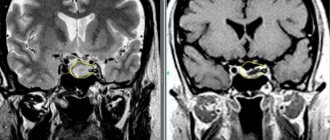Proper care of chlorophytum
Chlorophytum is a flowering plant, but flowering occurs only under certain conditions. Proper care and compliance with all procedures will ensure the availability of flowers from March to October. Basic growing rules:
- lighting and placement - feels good on windows facing south, south-west and south-east. In the morning it likes to be in the sun, at noon it needs to be shaded and provided with diffused light;
- temperature in summer - 20... 23°C, in winter - 12... 18°C;
- humidity in the warm season, during the period of active growth the humidity should be high - 70–75%, in winter - moderate 50%;
- watering - during the active growing season, water thoroughly 2-3 times a week. During the dormant period, from October to January inclusive, make sure that the soil ball does not dry out;
- fertilizing - fertilize with balanced mineral liquid complexes for flowering or ornamental foliage plants, fertilizing frequency - 2 times a month;
- the soil is light and nutritious with neutral acidity, well permeable to air and moisture.
Diagnostics
A neurologist diagnoses and treats the problem. The person may also be sent to a neurosurgeon, psychotherapist and other specialists.
Diagnosis begins with a detailed interview with the patient. Experts find out the symptoms and nature of amnesia and its cause. They use information about a person’s health and illnesses to find the root cause. This information will help restore healthy brain activity.
During the interview, the specialist finds out the following points: • When memory impairment began • What is the nature of the problem: memory is lost abruptly or gradually • What is difficult to remember • Are there any problems with everyday activities • What is the patient’s illness and what medications is he taking?
The patient undergoes laboratory tests to determine nervous system disorders that affect memory. For research we use:
• Biochemical blood test • Cerebrospinal fluid analysis • Electroencephalogram • Toxicological tests • Brain examination • Blood vessel analysis • DSM – duplex scanning of cerebral vessels • CT – computed tomography of the brain • Doppler ultrasound of cerebral vessels
It is necessary to carefully study the patient's situation and observe him for some time in order to correctly identify the problem and prescribe the correct treatment.
Chlorophytum: drying of leaf tips and other growing problems
Every novice gardener dreams of owning a plant that has an attractive appearance and does not require complex care at home. There is such a flower. This is a well-known chlorophytum. Bright greenery lifts your mood and creates a feeling of comfort. But before you get a pet, you need to learn as much as possible about caring for it.
The most recognizable plant that did not flinch and did not give up its position in front of newfangled and expensive exotics is chlorophytum. Surely this name is well known even to those who are not keen on growing flowers. After all, it is chlorophytum that is most often found in the most visited places - hospitals, kindergartens, libraries, schools.
Chlorophytum is the most recognizable plant
This representative of the genus of herbaceous plants was first mentioned in 1794. Chlorophytum began its journey around the world from the humid subtropics of South Africa and the tropics of South America. Now, probably, you cannot find a corner on our planet where this amazing plant is not grown.
The southern parts of Africa and America are considered the homeland of chlorophytum.
The name chlorophytum is translated from Greek as “green plant”. Indeed, many of its species have leaves of a bright and cheerful green color.
Long, up to 80 cm, graceful linear leaves are slightly curved and collected in a basal rosette or bunch. The height of the plant when grown indoors and depending on the species ranges from 15 to 40 cm. Under natural conditions, its volume reaches meter sizes.
It is for these small rosettes, reminiscent of spiders descending on a cobweb, that chlorophytum received another name - spider plant.
Daughter rosettes hanging from the mother plant resemble spiders
The roots of chlorophytum have tuberous thickenings. They accumulate moisture, and this feature helps the plant survive periods of drought.
Chlorophytum is considered the most domestic plant, unpretentious and unpretentious. Suitable for both beginners and busy people. Despite its unpretentiousness and undemanding nature, it has an attractive appearance. Yes it grows very quickly.
Chlorophytum is considered the most domestic plant
The benefits of chlorophytum
The plant is considered an ideal indoor air purifier. By absorbing formaldehyde and carbon monoxide, it releases oxygen. Chlorophytum is very suitable for smokers, as it can neutralize nicotine. Those suffering from bronchopulmonary diseases and allergies also cannot do without a green doctor. Chlorophytum is able to humidify the air and clean it of bacteria.
If we turn to popular beliefs and Feng Shui, then according to them, peace and comfort will always reign in a house where chlorophytum grows. That is why the plant is also called Family Happiness.
Chlorophytum has only 2 disadvantages. Its succulent leaves are very fragile and cats love to eat them.
Cats just love to chew chlorophytum
Types and varieties
The genus includes almost 200 species. Taking some of them as a basis, breeders have developed many varieties. Currently, there are many different representatives of this genus in the world.
Chlorophytum Bonnie Chlorophytum Orange Green Chlorophytum Cape Chlorophytum Mboeti Chlorophytum Variegatum Chlorophytum Crested Chlorophytum Winged
In order for the green colors of chlorophytum to remain bright, it needs a bright place
Chlorophytum can be grown in florariums, but not in fashionable mini ones, but in larger ones, for example, in large aquariums or display cases, both open and closed. In unlimited space, there is no need to worry about growth rates.
Chlorophytum is not only a beautiful, but also an extremely useful plant. It is capable of actively removing harmful substances contained in the air of city apartments. In addition, the flower saturates the room with oxygen.
One of its advantages is its unpretentiousness and ease of care. Chlorophytum is practically not susceptible to diseases that affect other ornamental plants.
However, certain problems during cultivation are still observed.
Leaf diseases
Despite the high level of resistance to pests and most diseases, chlorophytum sometimes loses its decorative effect and even dies. The reason may be the owner ignoring basic maintenance rules or an attack by pests to which the flower is not immune.
These include:
- aphid;
- spider mite;
- thrips;
- scale insect
The presence of problems or diseases of chlorophytum may be indicated by:
- pale green color;
- yellowing;
- loss of tugor;
- dying off of foliage;
- the appearance of spots of different colors.
Turn yellow
Yellowing is not always caused by a plant disease. More often this is due to a violation of the conditions of detention. Yellowing can be caused by:
- natural aging;
- lack or excess of moisture;
- mechanical damage to greenery;
- nutritional deficiency;
- incorrectly selected pot.
Old leaves turn yellow and dry out over time. This is a natural process that does not require treatment. It is enough to remove dying greenery. If the leaf is broken, it is not able to take in enough nutrients. This means that over time it turns yellow and dries out. This is also not a dangerous symptom. The damaged area is cut off, and the flower continues to develop fully.
Important! A constant excess of moisture causes root rot. The leaves turn yellow and the chlorophytum gradually dies. It is necessary to slightly dry the earthen ball and reconsider the watering regime. When the soil dries out, you can also observe the appearance of yellowness. In this case, you need to provide more frequent watering and spraying.
If the leaves turn yellow because the flower is in a small pot, then you need to replant it. If there is a lack of nutrients, complex fertilizers are added to the soil.
Why do they turn pale?
The loss of decorative color and pale color of the crown are due to lack of lighting. Chlorophytum is a plant that loves diffused sunlight. If the crown has turned pale, just move the flower pot to the windowsill. You can also provide him with additional artificial lighting.
In case of severe loss of color you need to:
- moisten the earthen ball;
- feed the flower;
- Move to a well-lit place.
Reference! With high-quality artificial light, chlorophytum not only fully forms a decorative crown, but also pleases the owner with regular flowering.
The tips of the leaves darken from excess moisture. This happens especially often in winter. During this period, chlorophytum is at rest, its growth slows down. The roots lose their ability to absorb a lot of moisture and as a result begin to rot. The above-ground part reacts by darkening the greenery.
To get rid of the problem, you need:
- reduce watering to a minimum;
- provide the plant with an acceptable temperature;
- stop feeding;
- trim off darkened leaves.
Reference! In spring, chlorophytum will begin to actively grow and form new young shoots.
Most often, in such cases, transplanting the flower into a more suitable soil helps. As well as timely feeding intended for decorative indoor plants.
Dry leaf tips can be caused by:
- long periods of time between waterings;
- lack of nutrients in the soil;
- excess salts;
- watering with unsettled hard water;
- frequent feeding with urea.
Reference! Before replanting the flower, it is important to completely remove the affected leaves.
Before taking active steps to save the flower, it is necessary to understand the cause of the disease. Chlorophytum is resistant to most infections. Most often, the cause is a violation of the plant maintenance rules.
For effective treatment you need:
- determine the nature of the disease;
- eliminate the cause;
- provide proper care.
Reference! If improving living conditions does not help to radically change the condition of the plant, then it should be treated with special preparations to combat pathogens.
Depending on the cause, you can take the following steps:
- violation of the rules of care - provide the flower with normal lighting, watering and fertilizing;
- fungal diseases - change the soil, trim damaged roots, treat with fungicides;
- insects - remove pests mechanically (wash with soapy water), treat with insecticides.
Insects that infect chlorophytum can be noticed by carefully examining the above-ground part. Based on external signs, you can easily determine the type of pest and determine what means to combat it.
Reference! It is necessary to get rid of harmful insects in the early stages, before they proliferate too much. With a strong population growth, they are capable of completely destroying the plant.
The type of pest can be determined by the following characteristics:
- a grayish coating that looks like small pieces of cotton wool—mealybug;
- yellow stripes and dry spots - thrips;
- twisted, deformed leaves, on the back of which you can see small insects - aphids;
- the leaves are covered with dark spots, sticky to the touch - scale insects.
First of all, it is necessary to isolate the infected flower from other plants. This will help prevent pests from spreading to neighboring flowers. The place where the chlorophytum stood is thoroughly treated with a soap solution. The above-ground part of the plant is also washed, mechanically removing pests. Then chlorophytum must be treated with insecticides.
Thrips are destroyed with Actarofin. When chlorophytum is affected by aphids, treatment with Actellik helps. You can also spray the plant with a water infusion of tobacco leaves or garlic. Actellik will also help against scale insects. Rubbing the leaves with kerosene also works well.
Reference! When treated with insecticides, only adult individuals die. Therefore, it must be carried out 2-3 times with an interval of 14 days. This allows the young animals to be destroyed.
Chlorophytum is absolutely unpretentious in care. It rarely dies even when kept in an unsuitable environment. However, if the necessary conditions are created and careful care is taken, the flower will become more decorative. It will also acquire immunity to various infections.
The main requirements for chlorophytum are:
- The plant loves light. In good lighting, it forms a decorative crown with an original color. Also, chlorophytum needs regular spraying of the above-ground part and a constant temperature.
- In winter, it is better to place the pot near lighting lamps. This will not only provide additional illumination, but will also allow you to maintain an optimal temperature around (22-24 degrees).
- The plant must be replanted regularly, otherwise it will stop growing. The roots will take up the entire space of the pot and begin to rot. If chlorophytum is not transplanted in a timely manner, it may die.
- black spots on greenery - excessive watering;
- slow growth - unsuitable soil (heavy, acidic), cramped pot;
- “babies” do not develop - cramped container;
- foliage breaks - lack of light;
- brown spots - waterlogging at low temperatures;
- leaves dry and curl - lack of nutrition and watering.
Did you know? Bioenergetics experts call chlorophytum an energy protector. The flower absorbs negative influences, creating a benevolent and harmonious atmosphere in the house, eliminating conflicts.
Types of senile forgetfulness
| Varieties | Manifestations of memory loss |
| By prevalence |
|
| By time |
|
| For lost events |
|
| By rate of loss |
|
| Global amnesia |
|
| Visual | impossible to recognize the people you meet |
| Selective | individual episodes pop up |
Asthenic syndrome
Memory problems in older people arise with the development of asthenic syndrome, a psychopathological disorder that is accompanied by the following clinical picture:
- increased irritability;
- insomnia;
- nervousness;
- headache;
- daytime sleepiness;
- absent-mindedness;
- forgetfulness;
- weather dependence;
- weakness;
- blood pressure surges;
- heart rhythm disturbance.
Provoking factors for the appearance of asthenic syndrome in older people can be:
- initial phase of schizophrenia;
- atherosclerosis;
- traumatic brain injury;
- oncological pathologies;
- abscesses;
- meningitis;
- encephalitis;
- viral hepatitis;
- brucellosis;
- heart failure;
- multiple sclerosis;
- arterial hypertension.
Amnesia
In old age, pathological loss of memory about past and current events in life sometimes occurs. This condition is called amnesia. The following factors influence memory loss:
- vascular disorders;
- age-related degenerative processes in the brain;
- tumors;
- vascular dementia;
- brain atrophy;
- diseases of the central nervous system;
- neuroinfections;
- toxic brain damage;
- mental disorders.
Doctors classify amnesia by the presence of the following signs:
| View | Manifestations |
| Dissociative | Events that caused psychological trauma disappear from memory |
| Retrograde | remember only what happened before the traumatic factor |
| Fixation | no memory of today's events |
| Anterograde | forget everything that happened after the injury |
| Procedural | loss of household skills - how to use a knife, brush teeth |
| Total | people don't remember anything, including themselves |
Paramnesia
Elderly people are characterized by the appearance of distorted memories, to which their own fantasies are added. This condition is called paramnesia and has several types:
| Variety | Manifestations of violations |
| Confabulation | replacement of fragments of real events with invented facts that are presented as reality |
| Pseudo-reminiscence | a memory is replaced by another from real life |
| Cryptomnesia | information from films and books is passed off as experienced events |
| Echomnesia | people feel that history has already happened to them, although in reality it did not happen |
| Palimpsest |
|
All the most useful nuances about caring for chlorophytum
Chlorophytum belongs to the genus of herbaceous plants and is perhaps the most common indoor plant.
The leaves of this plant are quite long, narrow and most often drooping, collected in bunches at the roots, having longitudinal dark green or light green stripes. Chlorophytum flowers are quite small and form a loose panicle.
Today there are about 215 species of chlorophytum in the world. It mainly grows in Africa, Madagascar, South America, South Asia, and Australia. The original homeland of chlorophytum is South Africa.
Beneficial features
Chlorophytum (popularly referred to as a “vacuum cleaner”) is the most useful plant that has powerful cleansing properties. The benefit of chlorophytum lies in the significant improvement of the air in the apartment and the ability to destroy various phenols and formaldehydes emitted by furniture, as well as pathogenic bacteria, including carbon monoxide and acetone.
Even basic plant care allows you to grow such beauties
It has been proven that chlorophytum can neutralize up to 80% of carbon monoxide. In this regard, it is most often recommended to place this plant in the kitchen, since it is where harmful microorganisms accumulate the most after smoking, cooking, and using various detergents.
Also, for various infectious diseases, the plant can be placed next to the patient, thereby helping to cleanse the air of microbes around him.
An important property of this plant is that it can significantly humidify the air. Chlorophytum is, first of all, a plant that came out of the tropics. Therefore, it is natural that it is endowed with the ability to maintain a healthy microclimate around itself.
Chlorophytum is ventilated
Chlorophytum does not require special attention, so it allows even the most significant mistakes in care. It tends to withstand both a room that is too cool and an atmosphere that is too hot.
It can also go for periods of time without watering. However, the plant will respond to its owner with much greater gratitude if you still try to follow some rules for caring for it.
Lighting and watering
In most cases, chlorophytum prefers fairly bright places or partial shade as its location. But under no circumstances should it be exposed to direct sunlight. Indoors, the ideal location for the plant would be a west or east window.
Sufficiently abundant watering of chlorophytum should occur from mid-spring to mid-autumn. In winter, watering should be reduced to a moderate amount. Just like most indoor plants, chlorophytum prefers spraying, especially during hot periods.
From approximately March to August, the plant can be fertilized and fed approximately once a week, at intervals of 7 days. Fertilizers should be purchased that are intended specifically for the comprehensive care of ornamental leaf plants.
For proper cultivation and proper planting, chlorophytum needs a certain soil composition. You can purchase it ready-made (for decorative foliage plants) or prepare it yourself. It consists of equal parts of humus, sand and deciduous soil.
Reproduction of chlorophytum
Replanting or propagating chlorophytum is best done in early spring or late winter. Since the plant has a horizontal growth of the root system, it is best to take a container for replanting that is spacious and not very deep.
Reproduction should be done either by rooting daughter rosettes or by dividing the main root into parts.
When rooting daughter rosettes, you should first place them in a container of water for some time until small root formations appear.
Before replanting (about three hours), it is necessary to thoroughly water the plant twice.
Chlorophytum is most often exposed to various diseases in winter. You should pay attention to some external indicators that the plant exhibits with insufficient care:
- if the air temperature is too low and excessive watering, brown spots may appear on the leaves of the plant;
- with a lack of watering, wrinkled leaves appear along the edges;
- with a lack of light and too much aridity of the soil, pale leaves appear. Moreover, they can crumble;
- with low humidity and lack of complementary foods, dry tips may appear on the leaves.
It also happens that chlorophytum refuses to bloom. In this case, you just need to change the place to a more spacious and bright one, or simply change the pot to a more spacious one.
Popular types
At the moment, among the variety of types of chlorophytum for home floriculture, only three species are most often found - chlorophytum crested, chlorophytum curly and chlorophytum orange.
Crested
Chlorophytum crested (another name is Chlorophytum laxum) is the most common. It has long leaves, shaped like a panicle. Typically, such leaves are decorated with white longitudinal stripes.
This plant blooms like an arrow with many white small flowers. After the plant has finished flowering, it is recommended to cut off the remaining growths, as they may prevent the plant from fully continuing its growth.
Curly
Orange (winged) type of plant
Curly chlorophytum has some similarity in appearance to crested one, only in this case the leaves tend to hang down and curl a little around the pot. This type of plant is more suitable for small spaces, as it is quite compact in size. The leaves also have a characteristic longitudinal white stripe.
Orange
Chlorophytum orange (also called winged or marmalade) has significant external differences from the previous ones. The leaves of this species have a pointed shape and are dark green in color. It reproduces exclusively by seeds.
It’s not for nothing that chlorophytum has gained such popularity. It is thanks to its unpretentiousness and high resistant qualities to adverse manifestations of the external environment that it is now found in literally every home. However, during periods of its cultivation some difficulties may arise.
The most common problem with home chlorophytum is the formation of yellow leaves. This phenomenon is associated with the appearance of rotten roots or acidification of the soil.
In this case, you should stop watering the plant too often.
If the leaves continue to turn yellow, the flower should be transplanted into a more suitable soil composition. The flowerpot must be spacious enough with many holes in the bottom. It is also recommended to place a small drainage at the bottom of the pot.
Drying leaves
The cause may be insufficient nutrition of the plant. Fertilizing should be enhanced, for example, with fertilizer that contains nitrogen.
You can also try to move the plant to a more spacious place, since the tips of the leaves may touch the glass on the window or wall and thereby be damaged. Sometimes this can be caused by too dry air in the room, or too low a temperature level (chlorophytum is difficult to tolerate below 10 degrees). If the room temperature is low, you should reduce the amount of watering.
Why doesn't it bloom?
The main reason for the lack of flowering of chlorophytum is an incorrectly selected pot. This can inhibit flower development. So, if the flowerpot is too large, then the root system of the plant begins to fill it with itself, after which the crown begins to strengthen and grow. After some time, the chlorophytum will bloom.
If chlorophytum develops normally (has beautiful green leaves, a lush crown and a strong root system), then flowering will definitely occur, you just need to wait a little.
We invite you to appreciate all the beauty of this phenomenon using the video below. Enjoy watching friends!
What it looks and feels like
Memory impairment, as a rule, is not an isolated syndrome and is accompanied by all sorts of symptoms associated with the causative disease:
- with neuroses, irritability, anxiety, and sleep disturbances may occur;
- with atherosclerosis – headache, dizziness, asthenia;
- for depression – loss of appetite, drowsiness, apathy, etc.
As for the symptoms of dysmnesia itself, memory impairments with it can be modality-specific and modality-nonspecific.
In the first case, specifically any of the forms of memory suffers (for example, visual, associative, auditory); in the second case, all types of memory as a whole are impaired. Such differences in symptoms depend on the volume and location of brain disorders. Dysmnesia usually causes problems with remembering recent events that happened in recent weeks, months, or years. As for those situations that took place before the brain’s ability to fixate was impaired, the patient remembers them well and can often talk about them in detail.
Pathological memory loss should be distinguished from such common situations as elementary absent-mindedness, forgetfulness, and inattention.
These phenomena can occur in completely healthy people; their occurrence is usually associated with banal reasons, for example, overload with information at work (the situation can be corrected by a regular vacation), lack of interest in the subject of memorization, etc.
It is interesting that in some pathological conditions a short-term exacerbation and enhanced memory may sometimes be observed. This happens, for example, in some manic states, alcohol or drug intoxication, epilepsy, etc.
However, as a rule, such episodes are short-lived and have the character of a short “outburst”, after which “attenuation” and a slowly progressive decrease in mnestic functions occur.
Preventive measures
Diseases and problems with the growth and development of chlorophytum can be prevented. Basic preventive measures:
- Plant the plant in suitable soil: with neutral acidity and good throughput.
- Before planting, the soil must be disinfected (calcined or steamed in a water bath).
- Protect the plant from hypothermia and overheating, and from drafts.
- If the air is too dry, apply humidification measures (spraying).
- Follow the watering schedule; the soil should not be dry or too moist.
- The plant needs bright, diffused light. During the period of sun activity, the flowerpot needs to be shaded.
- Carry out the transplant in a timely manner, adhering to the procedure technology (transshipment method).
- During the period of vegetative activity, follow the regime and dosage of fertilizing.
- Regularly inspect plants for insect pests.
Chlorophytum is loved by many experienced gardeners; even beginners can cope with its care. The decorative flower is unpretentious and hardy, but its development depends on compliance with the rules for cultivation and care.
- Plant the plant in suitable soil: with neutral acidity and good throughput.
- Before planting, the soil must be disinfected (calcined or steamed in a water bath).
- Protect the plant from hypothermia and overheating, and from drafts.
- If the air is too dry, apply humidification measures (spraying).
- Follow the watering schedule; the soil should not be dry or too moist.
- The plant needs bright, diffused light. During the period of sun activity, the flowerpot needs to be shaded.
- Carry out the transplant in a timely manner, adhering to the procedure technology (transshipment method).
- During the period of vegetative activity, follow the regime and dosage of fertilizing.
- Regularly inspect plants for insect pests.
Prevention of mnestic disorders
Measures to prevent memory loss include, firstly, a healthy lifestyle and proper nutrition.
Eating fresh fruits, vegetables, seafood, regular physical activity, memory training with the help of logic games and special tests - all this helps to ensure that memory remains healthy for many years. It is of great importance to give up bad habits - drinking alcohol, smoking, etc. The important role of a proper work and rest schedule, avoiding stressful situations and excessive emotional stress is undoubtedly important.
Finally, another most important condition is careful attention to your health: timely examinations, as well as prevention, identification and treatment of causative diseases that lead to the development of memory impairment.
Drug treatment
Treating memory loss in older adults is challenging but feasible. First of all, medical care consists of prescribing drugs that activate cerebral circulation and metabolism, as well as drugs that help provide brain cells with oxygen and necessary elements.
Patients are recommended B vitamins, neuroprotectors, and adaptogens. The objectives of their use include preventing the destruction of neurons, having a positive effect on brain function and improving the quality of life in general.
Among the medications prescribed for memory loss in an elderly person are:
- nootropics (Piracetam, Phenotropil, Vinpocetine, Phenibut);
- vascular agents (Trental, Pentoxifylline);
- drugs useful for memory function (Glycine, Memantine).
Of course, methods of treating memory loss depend on the type and severity of the disease, characteristic symptoms and causative factors. The main goal of therapy with memory-restoring tablets for the elderly is to prevent memory loss and stabilize the patient’s condition.
A positive effect is possible only with a course of medications, under medical supervision, and the earlier therapy is started, the greater the chance of success. At the same time, complete cure of memory loss is very difficult and does not seem feasible.
Therapy methods
They are determined by the nature of memory loss, the degree of its preservation, and the patient’s state of health. Medical doctors use drug therapy (nootropic or neurotropic drugs, drugs to correct metabolism, memantines, anticholinesterase drugs). Additionally, physiotherapy, exercise therapy, sets of exercises to restore cognitive functions, and special diets can be used. An integrated approach to treatment slows down memory loss and helps restore it and fight age-related mental changes.
Sign up for a consultation
Memory tests
These memory exercises can be done independently at home to test your memory.
Test No. 1
The “Shopping List” test is suitable for testing short-term memory. Write down any 10-item shopping list on a piece of paper. Let the elderly person study it for 40 seconds and remember it. Then check how many items from the list the person remembers: you can ask orally, or write down on paper. Missing an item or incorrectly named word from the list is counted as an error. If there are no errors, then everything is fine with the memory. If a person has up to 4 errors, then he has normal memory for old age. If there are 5 or more errors, the brain needs help.
Test No. 2
Ask the subject to draw a clock face with a specific time. This test not only tests the memory of an elderly person, but also the soundness of his thinking. If the dial is depicted evenly, the numbers are located correctly and do not stand out from the general row, the hands are also even and correctly indicate the given time - the person is healthy, his memory is in order. When dementia begins, the drawing will be crooked, the numbers will be of different sizes, in the wrong order, the arrows will be uneven, and show the wrong time. Severe deviations from the normal pattern may indicate the onset of dementia. This simple test can be done regularly to check on an older person. If severe defects are detected in the drawing, the person should be taken to a doctor for diagnosis.
Test No. 3
This test tests long-term memory. You need to write down several contacts of your loved ones on a separate sheet - up to 5-10 numbers. Try to learn this list, and then check the quality of memorization after 1-3 days. If a person can correctly recall most of his contact list, he is doing well with long-term memory. If not, there is something to work on.
Verbal counting
An effective option that can be made a rule. With the advent of a calculator in every phone, the need for independent calculations has disappeared, which negatively affects memory. It is necessary to force yourself to count in your head according to the necessary daily needs. If there are not enough of them, then you can add exercises: adding and subtracting numbers at speed, remembering and applying the multiplication table.









